Altra Timp 2.0
Test Location: Gunnison-Crested Butte Valley, Colorado
Test Duration: 185 miles
Stack Height: 29 mm (heel) / 29 mm (forefoot)
Stated Heel-to-Toe Drop: 0 mm
Stated Features:
- High cushion Quantic Midsole with InnerFlex for resilient, flexible cushion
- MaxTrac / TrailClaw Outsole for extra grip on any trail
- Multi-Directional Mesh Upper
- Insole: 5mm Contour Footbed
- Tweaked fit and lacing system to provide a better locked-in feel
MSRP: $140.00
Size Tested: US Men’s 11.5
Stated Weight per Shoe (US Men’s Size 9): 281 g / 9.9 oz
Blister Measured Weight per Shoe (US Men’s Size 11.5): 322 g / 11.4 oz
Reviewer: 6’1”, 145 lbs
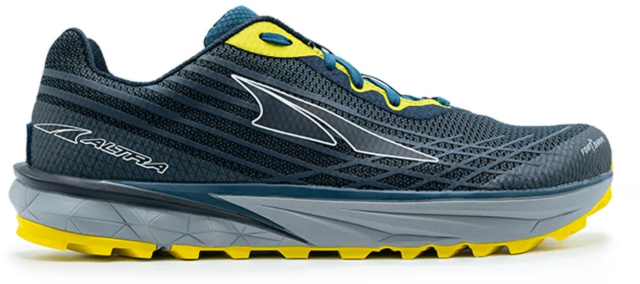
Intro
The Altra Timp is the brand’s second-most-cushioned trail shoe, with a stack height that falls in between the maximalist Olympus 3.5 and more moderate-cushion Lone Peak 4.5 (review coming soon). While Altra classifies the Timp as a “high-cushion” shoe, we thought that the previous two versions of the shoe felt decidedly more minimal than we expected them to. When compared to other high-cushion trail shoes like the Hoka Evo Speedgoat or Hoka Challenger ATR 5, the Timp provided much more ground feel and didn’t feel nearly as plush and protective.
While that was a bit of a letdown for some, I thoroughly enjoyed the Timp 1.5’s more minimal feel — I usually run in lower-stack shoes anyways, and the Timp 1.5 provided some much-needed extra cushion for my longer runs without feeling clunky and overbuilt. It also fit my fairly narrow feet very well while allowing plenty of space for toe-splay, and quickly became one of my favorite shoes for longer runs.
For the newest version of the Timp, Altra has tweaked pretty much every component of the shoe while maintaining the same intended use and target market. Any time one of my favorite shoes gets a major overhaul for a new version, I get a little worried that the brand will mess up something along the way and ruin a perfectly good shoe. But after about 185 miles in the new Timp 2.0, I’m happy to report that my fears were unfounded (at least this time). In my opinion, the Timp 2.0 is a better shoe than the Timp 1.5 in just about every way, though a few aspects will depend on your personal preferences. Here I’ll go through what’s new with the Timp 2.0 and why those changes make it one of my favorite shoes I’ve used.
Previous Versions
We’ve reviewed both the original version of the Timp and the Timp 1.5. In both cases, we were surprised by how much ground feel they provided for how much cushioning they featured. Given their 29 mm stack heights, the Timp 1.0 and Timp 1.5 both felt pretty darn minimal on trail. I usually prefer fairly minimal shoes anyways, so I really enjoyed the Timp 1.5 — in fact, it was probably my favorite shoe of last year. So I was both excited and a bit nervous to try the Timp 2.0. I had high hopes that it would address a few of the minor complaints I did have about version 1.5, but I was also a little worried that Altra would make some major change that messed up the smooth, flexible, cushioned feel of the 1.5
If, like me, you’ve enjoyed previous versions of the Timp, you’ll be pleased to hear that the Timp 2.0 feels fairly similar. Altra did make changes to pretty much every part of the shoe, but most of them are fairly minor once you put on the shoes. The outsole uses the same rubber compound as the Timp 1.5, but with a new lug pattern and added grooves for even more flexibility. The midsole has been updated to Altra’s new Quantic foam, which is a bit lighter than the A-Bound material found in the 1.5. Finally, the upper and shape have been slightly tweaked with the goal of providing a more secure, snug fit.
I’ll go into more detail below, but for me, all of these updates make the Timp 2.0 a better shoe than its predecessor. And on top of that, the Timp 2.0 is also reportedly 28 g / 0.6 oz lighter per-shoe than the Timp 1.5 was (our size 11.5 Timp 2.0 weighs 24 g less per shoe than our size 11.5 Timp 1.5). Personally, it bugs me when the new version of a shoe is heavier than the previous version, so I was happy to see that Altra kept the Timp’s weight going in the lighter direction with version 2.0.
Fit
If possible, it’s always best to try shoes in person before you buy them — everyone’s fit preferences are unique. With that in mind, I can provide some observations on how the Timp 2.0 fits my feet relative to other shoes I’ve been using. For reference, I have fairly low-volume feet and prefer shoes that feel snug around my ankle and midfoot while still allowing for toe splay on longer runs.
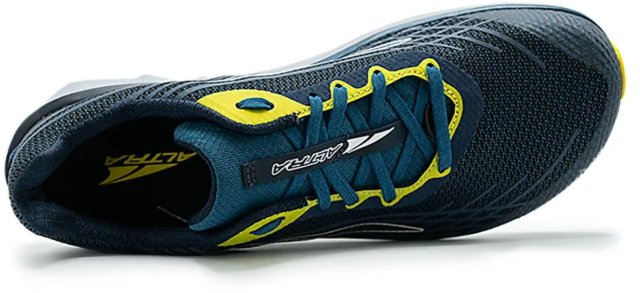
Altra markets all of their shoes as having a “Footshape™ Toebox.” Practically speaking, that means that their shoes have a wider, more rounded toe box than you’d see on most shoes from a brand like Salomon, Nike, or Hoka. I’ve enjoyed the wider toe box on most of Altra’s shoes, as I like having some space for my toes to spread out. With that said, some of Altra’s shoes feel a bit too wide for my fairly narrow / low-volume feet. One of my favorite things about the Timp 1.5 was that it maintained the wide toebox you’d expect to find on an Altra, but had a much more snug fit through the midfoot and heel than the Lone Peak 4.5 or Olympus 3.5. The Timp 1.5 still felt a little insecure on technical or off-camber terrain compared to a shoe like the La Sportiva Bushido II, but the Timp 1.5’s fit was pretty ideal for my preferences on more moderate terrain. Altra claims that the Timp 2.0 has a more secure, locked-down fit than the 1.5, and I think they’re absolutely right.
Like the Timp 1.5, the Timp 2.0 has a pretty, wide, rounded toe box, though the 2.0’s toe box is not as large as the 1.5’s, which could be one of the main downsides to the updated 2.0 if you have particularly wide feet. The Timp 2.0’s toe box has provided plenty of space for my forefoot / toes, which has made for a much more comfortable fit than a narrower shoe like the Hoka Evo Speedgoat — especially on longer runs. But the Timp 2.0’s fit through the midfoot and heel is noticeably more secure than it was in version 1.5. It seems like Altra mostly accomplished this by making the heel / midfoot slightly narrower than the previous version and eliminating some of the extra padding around the ankle collar. Whatever they did, I’m a big fan. The Timp 2.0 feels much more secure on uneven terrain than the 1.5 did. The Timp 2.0’s fit still isn’t quite as rock-solid as the La Sportiva Bushido II, but it strikes a good balance between stability and comfort for me. It’s spacious enough to be very comfortable for me on long runs, but locked-down enough to avoid feeling sloppy on extra spicy sections of trail.
It is worth re-stating that I’ve got pretty narrow, low-volume feet, so if you have wide feet and / or high arches, the Timp 2.0 might not fit quite as well. I still wouldn’t classify it as a particularly narrow shoe compared to the whole market, but it definitely offers a bit less volume overall than some other Altra shoes like the Lone Peak 4.5 or Olympus 3.5.
Zero Drop
Like all of Altra’s shoes, the Timp 2.0 has the same stack height in the forefoot and the heel, equating to a stated 0 mm heel-to-toe drop. Zero-drop shoes tend to promote a forefoot strike, which some people (myself included) find feels more efficient / natural than a shoe with a more “traditional” drop (roughly 8-12 mm) that encourages more of a heel strike. With that said, zero-drop shoes can also be a whole lot more demanding on your calves and feet than higher-drop shoes if you’re not used to the flatter profile. So if you usually run in shoes with a higher heel-to-toe offset, we’d recommend slowly transitioning into a shoe like the Timp 2.0 (e.g., wear them for one short run the first week, two short runs the next week, etc.) to avoid hurting yourself.
Weight
As I said at the top, I’m pretty stoked that the Timp 2.0 is lighter than the Timp 1.5. The Timp 1.5 didn’t feel overly heavy on trail, but it didn’t feel particularly light and speedy, either. While the Timp 2.0 is far from an ultralight shoe, it does feel noticeably lighter than its predecessor. It’s also lighter than many similarly cushioned shoes from different brands. For reference, here’s how the Timp 2.0’s stated weight compares to the stated weights for some other similar models. All weights are based on a US Men’s Size 9.
264 g / 9.3 oz — Topo Athletic MTN Racer
275 g / 9.7 oz — Hoka One One Challenger ATR 5
281 g / 9.9 oz — Altra Timp 2.0
281 g / 9.9 oz — Hoka One One Evo Speedgoat
289 g / 10.2 oz — Brooks Caldera 4
298 g / 10.5 oz — Altra Timp 1.5
298 g / 10.5 oz — Nike Wildhorse 6
298 g / 10.5 oz — Salomon Sense Ride 3
306 g / 10.8 oz — Hoka One One Speedgoat 4
There are lighter shoes that offer similar amounts of cushioning, but the Timp 2.0 is definitely on the lighter end of the “high-cushion” shoe category. I thought that the Timp 1.5 felt lighter on the trail than I’d expected from its stated weight, and the same holds true for the Timp 2.0. On paper, the Timp 2.0 weighs the same amount as the Hoka Evo Speedgoat, but to me, the Timp 2.0’s more flexible cushioning makes it feel much lighter / more nimble than the Evo Speedgoat. Unsurprisingly, the Timp 2.0 still doesn’t feel as light as a far more minimal shoe like the Altra Superior 4 or Salomon S/Lab Sense 8. But for how much cushion the Timp 2.0 provides, its relatively low weight is pretty impressive.
Upper
Like the Timp 1.5, the Timp 2.0 has a fairly standard-looking mesh upper. The 2.0’s upper does have slightly fewer / more minimal synthetic overlays and slightly less padding around the ankle collar than the previous version, but the base mesh material looks and feels pretty similar to me. I’ve been happy with the Timp 2.0’s breathability and comfort so far — it hasn’t felt overly hot, and I haven’t experienced any blisters or rubbing, even on runs up to 3 hours long.
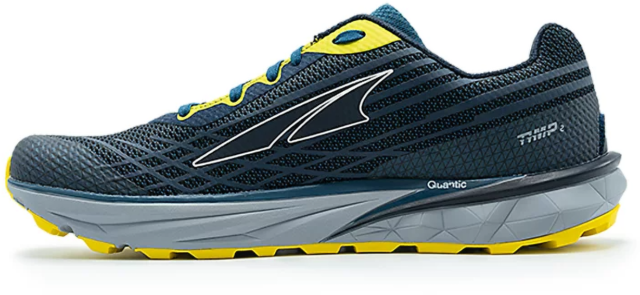
While there is slightly less padding around the ankle collar in the TImp 2.0, the heel cup still feels comfortable and, if anything, more secure than it did in the 1.5. Altra also slightly changed the shape of the lacing system, which greatly improves the fit for my feet. In the Timp 1.5, the edges of the lacing system were kind of hourglass-shaped when viewed from the top, with the top and bottom of the lacing system being wider than the middle. I’m still not really sure what that hourglass shape was supposed to do, but for my fairly narrow feet, I think it’s what made it difficult to tighten the Timp 1.5’s midfoot as much as I would’ve liked. The Timp 2.0 has a more normal-looking, straight-sided lacing system that seems to make it way easier for me to get a secure fit through the midfoot.
I’m curious to see how the Timp 2.0’s upper holds up over more time. So far it’s looking good, but the Timp 1.5’s upper totally blew out on me after about 350 miles. Since the Timp 2.0 uses pretty much the same material but has more minimal overlays, I’m a little concerned about the shoe’s longevity. I’ll provide an update on the Timp 2.0’s long-term durability once I’ve had the chance to put some more miles in the shoe.
Midsole
The Timp 2.0’s new midsole was one update that I was a little nervous about. The 2.0 replaces the A-Bound midsole found on the 1.5 with Altra’s new Quantic material. Altra also used a Quantic midsole on the Superior 4.0, and I thought that it felt a bit “flatter” and offered less rebound than the A-Bound midsole found on the Superior 3.5. So when I saw that the Timp 2.0 was getting a Quantic midsole as well, I was a bit concerned that it would lose the resilient, almost bouncy-feeling ride of the 1.5.
Fortunately, the Quantic midsole feels much better on the Timp 2.0 than it did on the Superior 4.0, in my experience. I’m not sure if it’s just a result of the Timp’s higher stack height or if Altra has tweaked the Quantic material since the Superior 4.0 came out, but the Timp 2.0’s midsole still feels fairly energetic. The Timp 2.0 doesn’t feel quite as springy underfoot as the Timp 1.5 did, but the 2.0’s midsole still provides plenty of cushion and energy return for my preferences. Personally, I still think that the A-Bound midsole provides a slightly better ride, but the Quantic material comes close — and it’s notably lighter, which I really appreciate. Overall, the Timp 2.0’s midsole feels pretty similar to version 1.5, and still provides a smooth ride with a decent amount of energy return.
As with the previous versions of the shoe, the Timp 2.0 does feel more minimal and close to the ground than you might expect of a shoe with a 29 mm stack height. I still have a hard time putting a finger on exactly why this is, but the Timp 2.0 still doesn’t feel like a soft, pillowy, maximally cushioned shoe. It feels much more like a lightweight, fairly fast shoe with a little extra cushion. For my preferences, this type of cushioning is awesome — it’s protective enough to be comfortable for runs of just about any length, but not so soft and overbuilt that it feels clumsy on faster-paced runs. But if you don’t like a lot of ground feel and are looking for a truly maximal-feeling shoe, I think you’d be better off with something like the Hoka Speedgoat 4, Hoka Challenger ATR 5, or Altra Olympus 3.5.
Outsole
Like the rest of the shoe, the Timp 2.0’s outsole is slightly different and slightly better than the previous version, in my opinion. It still uses Altra’s MaxTrac™ rubber compound, but it’s got slightly larger, differently shaped lugs vs. the Timp 1.5. The Timp 2.0’s outsole also has eight, deep grooves that allow the shoe to flex extremely easily. I think this extra flex might partially explain the Timp’s more minimal feel — other shoes with similar stack heights like the Hoka Evo Speedgoat are much less flexible, which I think limits ground feel and is also why they tend to feel a bit “clunkier” and less precise. The Timp 2.0’s greater flexibility allows it to conform to the terrain a bit better. As I’ve said, I’m partial to a little extra ground feel, but the Timp 2.0’s extremely flexible outsole and midsole do make it feel less maximal / cushioned than you’d expect based on its stack height.
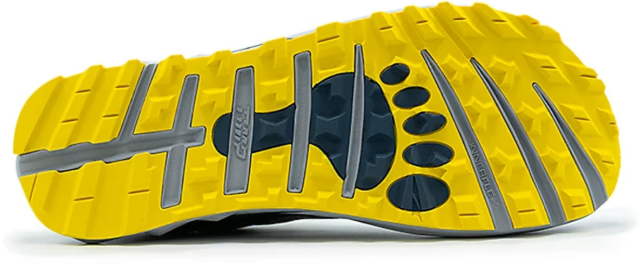
Flexibility aside, the Timp 2.0’s outsole provides noticeably better traction than the 1.5 did, particularly on loose or wet terrain. The Timp 2.0 still doesn’t offer quite as much traction as shoes like the Hoka Evo Jawz (review coming soon) or La Sportiva Lycan II that are more specifically designed for muddy, technical terrain, but the Timp 2.0 does provide enough grip to feel secure on most trails. I’ve run on everything from pavement to off-camber rocks to shoe-sucking mud in the Timp 2.0, and the only time I’ve wished for more traction was in extremely deep, slippery mud and snow.
The Timp 2.0 doesn’t have a rock plate and despite offering good ground feel for its stack height, its rubber outsole and fairly thick midsole have provided enough protection to the point that I’ve never had a problem with getting sore feet from stepping on sharp rocks or roots while running in the shoe.
On Trail
The 185 miles I’ve run in the Timp 2.0 so far have included “normal runs,” interval workouts, and long runs up to 3 hours on the wide variety of terrain in the Gunnison-Crested Butte valley. While I’ve been happy with the Timp 2.0’s performance across the board, I think it excels most on longer trail runs that aren’t extremely technical. The Timp 2.0 is lighter than the Timp 1.5 was, but it still doesn’t feel quite as light and fast on especially high-output runs / interval workouts compared to lower-stack, firmer shoes like the Nike Terra Kiger 5, Salomon Sense 4/Pro, or Salomon S/Lab Sense 8. But for more moderate-paced, longer runs, the Timp 2.0 has quickly become my go-to shoe.
While I love more minimal shoes for short (< hour) to medium-length (1-2 hours) runs, I find most of them uncomfortable for runs longer than about two hours. The Timp 2.0 is one of the few shoes I’ve recently run in that actually feels like it would be comfortable all day. It’s got more forgiving cushion than more minimal shoes like the Salomon Sense 4/Pro or Nike Terra Kiger 5 and a more comfortable / spacious fit (for my feet, at least) than other shoes with similar stack heights like the Hoka Evo Speedgoat.
The Timp 2.0 also feels much more secure and stable on technical terrain than other maximal shoes I’ve used. The 2.0’s more snug midfoot / heel fit helps keep my foot in place even on gnarly, uneven trails. The upper still isn’t quite as locked-down and confidence inspiring as the La Sportiva Bushido II, but it’s a definite improvement over the previous version of the Timp in those regards.
The Timp 2.0’s fairly wide platform and excellent flexibility also help it feel more stable than other maximal shoes on technical, rocky trails. While testing the Hoka Evo Speedgoat, I noticed that it felt a little unstable on uneven terrain because of its fairly narrow last and rigid, inflexible, and thick midsole. I still didn’t mind running technical terrain in the Evo Speedgoat, but I did feel like I was about to spectacularly blow out an ankle a few times while running rocky downhills in that shoe. In the Timp 2.0, I’ve never felt like I was going to roll an ankle (at least not any more than usual).
I also think that the Timp’s superior ground feel makes it feel more nimble on technical terrain, but it does come at a cost. As with the Timp 1.0 and 1.5, the Timp 2.0 doesn’t feel nearly as maximal and plush as most shoes with 29 mm of midsole cushioning. So, like the previous versions, you’ll have to think about what exactly you want from your high-stack shoe when considering the Timp 2.0.
Durability
My pair of the Timp 1.5 suffered a massive upper blowout after about 380 miles, which made the shoes completely unusable. While the Timp 2.0 isn’t showing any concerning signs of wear after 185 miles, I am a bit concerned that I’ll run into similar problems down the road. The upper material seems to be pretty much the same as the 1.5, but with even more minimal overlays. I’ll provide a long-term update on the Timp 2.0’s durability once I’ve put more miles in the shoe, but for the time being, I’m hoping that they’ll last longer than the previous version did.
The Timp 2.0’s midsole and outsole seem to be holding up quite well so far. The cushioning still feels about the same as it did out of the box, and the outsole lugs are showing only minor signs of wear. I did also have some issues with the lugs in the Timp 1.5’s forefoot completely ripping off, and so far it seems like the Timp 2.0’s larger lugs are holding up better. They’re all still intact, and are only starting to wear down a little in especially high-wear areas.
Update: I’ve now put about 320 miles on the Timp 2.0, and regrettably it seems to be going in the same direction as the 1.5. The upper is on the verge of blowing out along the sides of the toe box on both shoes, and while it hasn’t impacted the shoe’s performance yet, I’ll be surprised if I’m able to get another 30 miles out of them. The outsole has also worn down quite a bit, especially in the forefoot — there’s not much much left in terms of traction, even on fairly moderate, dry terrain. One bright spot is the midsole, which still offers plenty of cushion and protection. It doesn’t feel quite as plush as it did earlier in the shoe’s lifespan, but it is holding up better than the rest of the shoe.
So unfortunately, it looks like the Timp 2.0 suffers from many of the same durability issues as the previous version of the shoe. I usually get about 400-500 miles out of most shoes, so it’s not as if the Timp 2.0 blew out way before I expected it to — but durability still doesn’t seem to be the shoe’s strong point.
Who’s It For?
As with previous versions of the shoe, I think that the Timp 2.0 is a compelling option for runners who want something with a pretty large amount of cushion but who aren’t ready to make the leap to a super maximal-feeling shoe like the Hoka Speedgoat or Altra Olympus 3.5. As someone who usually likes shoes on the more minimal side of the spectrum, the Timp 2.0 is the perfect option for when I want something with a bit more cushion for longer runs.
If you’re looking for a maximal shoe that will provide an extremely plush, protective ride and don’t care as much about ground feel or a flexible midsole, you’ve got better options than the Timp 2.0. But if most maximal shoes feel like overkill and you just want something with a bit more cushion that doesn’t completely eliminate flexibility and ground feel, I think the Timp 2.0 is definitely worth a look.
Bottom Line
The Altra Timp 1.5 was one of my favorite shoes of 2019, and the Timp 2.0 is well on its way to becoming one of my favorite shoes of 2020. While it isn’t exactly what you’d expect from a high-cushion shoe, I find that the Timp 2.0’s flexible-yet-cushioned feel is pretty ideal for longer runs. In addition, the Timp 2.0’s lighter weight and more snug, secure fit have improved its performance on shorter / faster runs and on more technical terrain relative to the previous version of the shoe.
I had my doubts as to whether or not Altra would really be able to improve on the Timp 1.5. But at this point, I’m convinced that the Timp 2.0 is a better shoe in just about every way, with the tweaked fit likely being the biggest debatable aspect, since its upsides / downsides will depend on your feet. But whether you’re already a Timp fan or you’re just looking for a cushioned shoe that doesn’t feel stiff and overbuilt, I’d highly recommend trying the Timp 2.0.


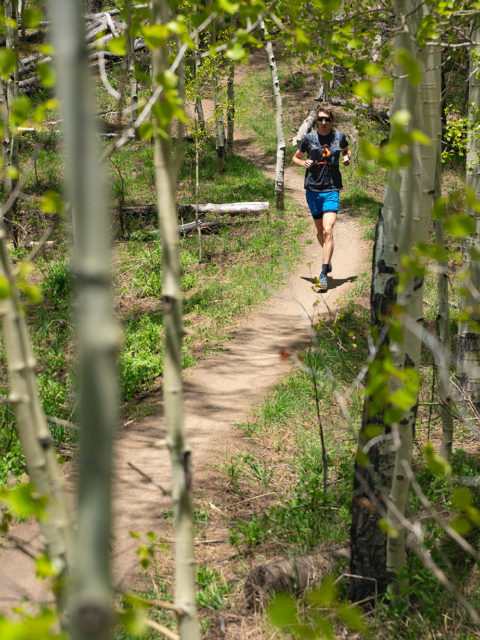
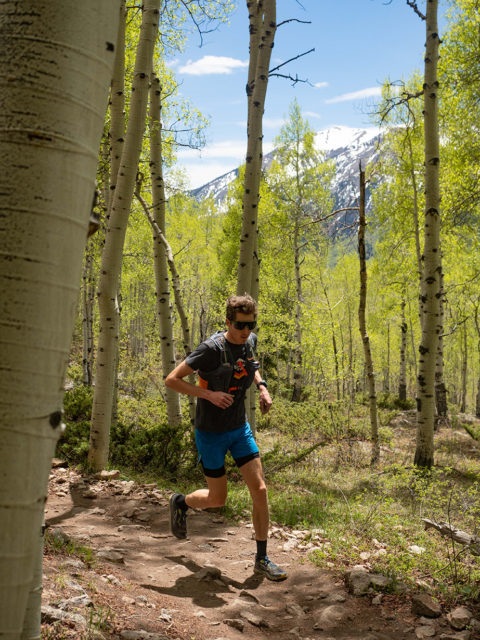

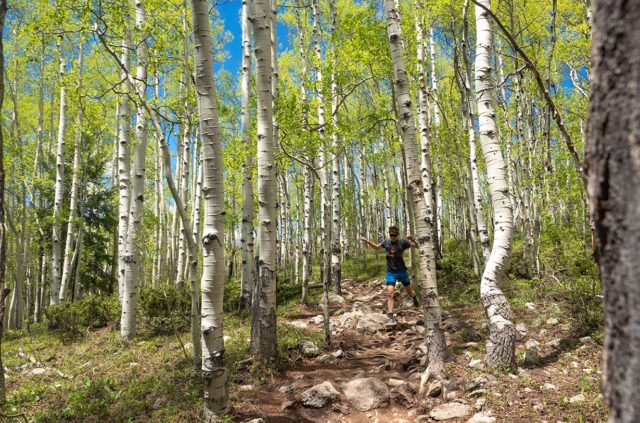
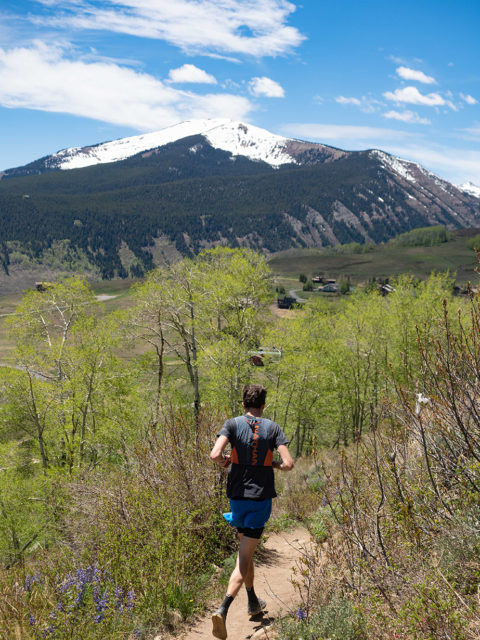
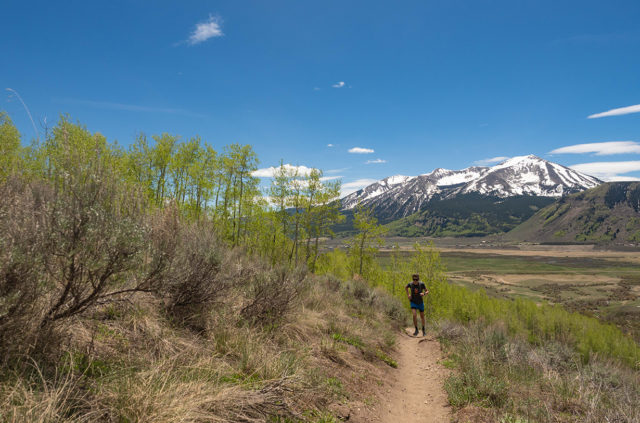
Thanks for your review. I hope the 2.0 uppers last longer. Had 2 pair blow out before 300 miles. Switched to Lone Peaks. No problems. I’m a huge believer in the Altra toe box.
Didnt even mention the width and how theyre narrow now.
Hey Chase,
As I mentioned in the “Fit” section, I’ve got pretty narrow feet, but the Timp 2 didn’t feel any narrower to me than the Timp 1.5— maybe slightly lower volume through the midfoot than the 1.5, but overall I didn’t notice a huge difference. It is worth mentioning that the Timp 2.0 is built on a narrower last than the Altra Olympus or Lone Peak, so relative to those shoes it is on the narrower side of things. With that said, I still thought that the Timp 2 felt fairly wide / roomy when compared to shoes like the Hoka Evo Speedgoat or Salomon Sense 4 /Pro.Thanks for reading!
Really great review. Thanks.
Any updates about the upper (and the outsole) durability?
Hey Jon, I’ve still only got about 200 mi on the Timp 2.0, so no major changes from what I said in the review so far- both the outsole and the upper are still holding up well. The new outsole pattern seems to be a bit more durable than the 1.5— I haven’t had any lugs rip off like I did with the 1.5. The upper seems fairly similar to the 1.5, which blew out after ~350 mi. I’m hoping that the 2.0 will last longer, but I’ll definitely update the review once I’ve put more miles on the shoe. Thanks for reading!
Hi!
I was considering this for my new shoes… But I need the “pillowy” cushion, so after reading your great review maybe this is not the kind of I shoe I was looking for…
For a softer, pillowy cushion to run ultramarathons which one do you think is would be better, the new Altra Olympus 4 or the Hoka Challenger 5???
Thanks in advance!
Hey Berto—
Yeah, the Timp 2.0 definitely doesn’t feel super cushioned / pillowy. I haven’t personally run in the Challenger ATR or Olympus, but both should provide much more cushion than the Timp. If you like a wider shoe (especially in the toe box), the Olympus will likely fit better, but the Challenger ATR should be solid if you don’t mind a narrower shoe.
I’m also a big fan of the Hoka Evo Speedgoat— I’d describe its cushion as more “springy” than “pillowy,” but it definitely provides quite a bit more cushion / protection than the Timp.
Hope that’s helpful!